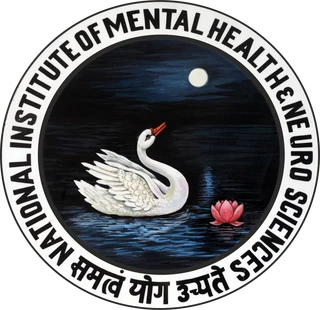Overview
The Bangalore Lunatic Asylum founded in 1847 by Dr. Charles Irwing Smith, a British medical practitioner in Bangalore, paved way for the eventual formation of NIMHANS we know today. On 27 December 1974 the All India Institute of Mental Health established by the Govt. of India and the Mental Hospital established by the Govt. of Mysore were made to amalgamate to form NIMHANS. With this AIIMH’s founder-director Dr. MV Govindswamy‘s dream of implementing an interdisciplinary approach by combining neurosciences and mental health became reality.
Academic Performance
More than 1000 Psychiatrists and about 600 Clinical Psychologists and Psychiatric Nurses- working in both international and national contexts have been produced by NIMHANS by now. Its esteemed academic position, growth and contributions were recognized by the Central Government and were given the “Deemed University” status in 1994. It was declared as an ‘Institute of National Importance’ in the year 2012.
NIMHANS is dedicated towards quality training, higher standards of clinical care and pioneering research in frontier fields. The innovations in genomics, molecular biology, mathematical modeling, computational neuroscience, neuroimaging and a plethora of new disciplines constituting public health are to help the mankind while promoting the growth of knowledge. Societal needs are addressed through a commitment to the integrated and interdisciplinary approach derived from fused priorities for manpower development & research and comprehensive patient care.
Research & Development
NIMHANS has been responsible for research that is of great quality and is translatable. It provides leadership for national policy making. The thrust areas of the several interdisciplinary and interinstitutional research initiatives continue to be:
- Unraveling the molecular and subcellular mechanisms of disease processes
- Linking clinical status with structural, immunological, biochemical and serological abnormalities looking for biomarkers
- Exploring the genetic basis for the cause of the diseases
- Developing prognostic, clinical predictors and diagnostic inventory and checklists.
The institute stepped up its research with new initiatives and projects during 2013-14. A number of scientific articles and communications were published- a total of 767, 357 in International Journals, 216 in National Journals and 194 various publications consisting of monographs, manuals, articles in newspapers and chapters in books.
Notable Alumni
Padma Bhushan M. Sarada Menon, the first woman psychiatrist of India and founder of Schizophrenia Research Foundation, had got a diploma in Psychiatric Medicine from NIMHANS. Padma Shri Sunil Pradhan, the neurologist and medical researcher, known for the invention of the two electrophysiological techniques and describing the five medical signs one of which is related to Duchenne muscular dystrophy and known as Pradhan Sign is an alumnus of NIMHANS. Jaswant Singh Neki, the neo-metaphysical Punjabi language poet, former director of PGIMER and head of the Psychiatry department at AIIMS, Delhi passed his DPM exam in 1958 from AIIMH, present-day NIMHANS. S.K. Ramachandra Rao, the Indian author, Sanskrit scholar and professor of psychology is an alumnus of AIIMH, now NIMHANS. McArthur fellowship awardee Radhika Chandiramani, the founder of TARSHI, a New-Delhi based NGO that works on issues of sexual and reproductive health and rights trained in clinical psychology at NIMHANS.

